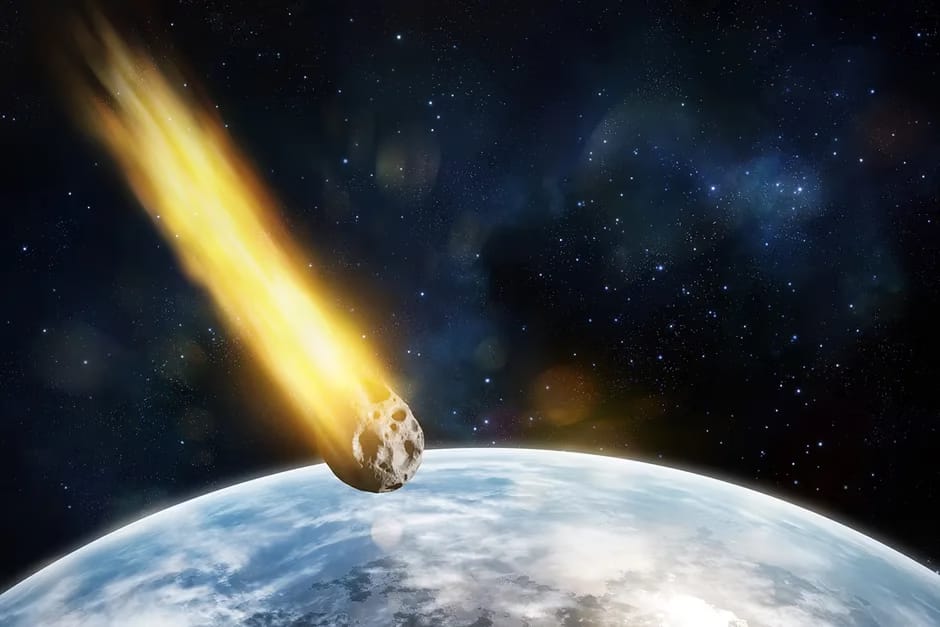As humanity continues to explore the cosmos, the threat of near-Earth objects (NEOs) remains a significant concern for scientists and space agencies worldwide. One such object, asteroid 2024 YR4, has recently captured the attention of planetary defense experts due to its potential to skim dangerously close to Earth in December 2032. While the likelihood of an impact is currently low, the asteroid’s trajectory is being closely monitored, and scientists are already considering potential responses, including a spacecraft-based mission to mitigate the threat.
The Discovery of Asteroid 2024 YR4
Asteroid 2024 YR4 was first detected on 27 December 2024 by the Asteroid Terrestrial-impact Last Alert System (ATLAS) telescope in Río Hurtado, Chile. Classified as a near-Earth asteroid, it quickly raised alarms due to its projected close approach to Earth on 22 December 2032. Initial estimates suggest the asteroid is between 40 and 100 meters in diameter, with a likely size exceeding 50 meters. While this may seem small compared to some of the massive asteroids in our solar system, an object of this size could cause significant regional damage if it were to collide with Earth.
The Risk of Impact
According to the European Space Agency (ESA), asteroid 2024 YR4 has a 99% chance of safely passing by Earth in 2032. However, there remains a 1.2% chance of impact, placing it at Level 3 on the Torino Impact Hazard Scale. This classification indicates a close encounter that warrants attention but is not yet a cause for public concern. Scientists emphasize that the probability of impact often decreases as more data is collected, but the asteroid’s current trajectory makes it a priority for observation.
The asteroid’s orbit is eccentric, meaning it is elongated rather than circular, making its path around the Sun more unpredictable. Currently, 2024 YR4 is moving away from Earth in a straight line, complicating efforts to precisely map its future trajectory. Astronomers are using some of the world’s most powerful telescopes, including the European Southern Observatory’s Very Large Telescope in Chile, to gather more data before the asteroid fades from view in 2025. It won’t become observable again until 2028, when it begins its approach toward Earth.
Planetary Defense Preparedness
In the event that the asteroid’s impact probability remains above 1%, international space agencies are prepared to take action. Two United Nations-endorsed groups, the International Asteroid Warning Network (IAWN) and the Space Mission Planning Advisory Group (SMPAG), are already monitoring the situation. IAWN would lead efforts to assess the potential impact and develop strategies to minimize damage, while SMPAG would explore the possibility of a spacecraft-based response.
The success of NASA’s 2022 Double Asteroid Redirection Test (DART) mission has demonstrated that deflecting an asteroid is feasible. If 2024 YR4 is deemed a threat, a similar mission could be launched to alter its trajectory. Such an endeavor would not only protect Earth but also provide valuable insights into planetary defense technologies.
The Bigger Picture
Asteroid 2024 YR4 serves as a reminder of the importance of planetary defense initiatives. While the chances of a catastrophic impact are low, the potential consequences are severe enough to warrant vigilance. ESA estimates that an asteroid of this size strikes Earth every few thousand years, capable of causing significant regional devastation. By investing in early detection systems and deflection technologies, humanity can better prepare for future threats.
As astronomers continue to track 2024 YR4, the coming years will be critical in determining whether it poses a real danger. In the meantime, the scientific community remains committed to safeguarding our planet, ensuring that we are ready to respond to any potential threats from the cosmos.
This article builds on the original piece by Iain Todd, providing updated context and emphasizing the importance of planetary defense efforts in addressing the potential threat posed by asteroid 2024 YR4.
Discover more from Pasindu Lakshan Perera
Subscribe to get the latest posts sent to your email.




